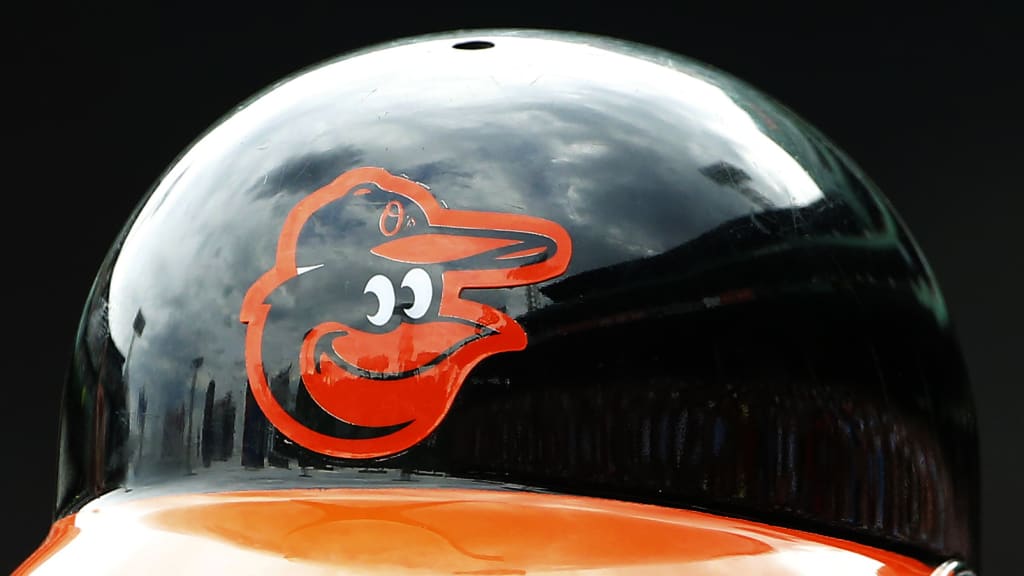How the oriole became a baseball bird

When many people think of orioles, a group of New World birds in the blackbird family, one of the first associations they make is baseball. The next is probably Baltimore. Put together, the city and brilliant orange-and-black bird have been linked for centuries, long before the baseball Orioles moved east from St. Louis in their current form, in 1954.
There were professional Orioles ballclubs in Baltimore well before that, also: The first Baltimore Orioles franchise played in the American Association from 1882-91, before becoming one of the National League’s top teams from 1892-99. A different Baltimore Orioles club folded after a brief two-year run in the American League from 1901-02. It would be another half-century before they returned as Bill Veeck’s former Browns.
Time after time, baseball came to Baltimore and looked to the birds for its namesake. Why?
The answer might seem simple. Not only is “Baltimore Oriole” the common name of an actual bird, but it’s one of eastern North America’s most famous. Yes, they are found in Baltimore and the greater Maryland region. They are exotic-looking yet regularly occurring backyard visitors, well known to nature adorers and casual observers alike.
So as we look across MLB.com for the origins of each MLB team name, the Orioles’ connection to Baltimore feels like one of the more natural fits. But there are 30 species of New World oriole, according to the National Audubon Society’s website (birds called “orioles” in the eastern hemisphere are actually part of a completely unrelated family, per Audubon). And Baltimore Orioles live all across eastern North America, from Newfoundland in the north, west to central Canada and throughout the Appalachians and Great Plains.
Why are they the Baltimore Orioles? What’s the connection there?
History says it comes from their colors. Wild male Baltimore Orioles sport striking black and orange breeding plumage, just like the uniforms of their baseball counterparts. 18th Century British naturalist Mark Catesby was the first to document how Marylanders called them “the Baltimore-Bird,” because males wore orange and black, according to Audubon. Those were the heraldic colors of Lord Cecil Calvert Baltimore, the first proprietor of the Maryland province and from where the city gets its name.
The state has given the bird special protections since 1882 and recognized it as its official bird since 1947.
One might note, however, how the crest colors adopted for the modern Maryland flag are decidedly more yellow-and-black than orange-and-black. The reason why is debated. It could be because female orioles are partially orange and duller in plumage compared to their male counterparts, while immature males can be yellowish. It could just be because things change and are adapted over time.
Or it could be purposeful ambiguity: The word “oriole” is derived from the Latin aureoles, which translates to “golden.”
Either way, there is no reason to think the bird and the city will sever their connection anytime soon. There was, however, a stretch of recent history when the baseball Orioles were the only Baltimore Orioles, at least technically.
Today, scientists recognize North American’s two most common oriole species as closely-related: the Baltimore oriole in the east, and the Bullock’s oriole in the west. But in 1983, taxonomists began considering them as one species under the name “Northern oriole,” in a classification process called species “lumping,” which effectively stripped “Baltimore” from the eastern orioles’ name. In 1995, scientists reversed course and split them back into two separate species.
“The debate over whether Bullock’s and Baltimore orioles are one species or two goes to the very heart of what defines a species,” ornithologist Jennifer Walsh told the Cornell Chronicle in 2020.
Meanwhile from 1983-95, the baseball Orioles won a World Series championship (’83), enjoyed their surprise “Why Not?” run of '89 and began building the core that would take them to consecutive playoff appearances from ‘96-97. Those years also covered much of Cal Ripken Jr.’s consecutive-games-played streak.
To this day, the club has made minimal changes to the orange-and-black color scheme that makes the Baltimore Orioles -- and Baltimore orioles -- distinctive. All orioles are migratory species, flying south in the winter and returning, like baseball, every spring.